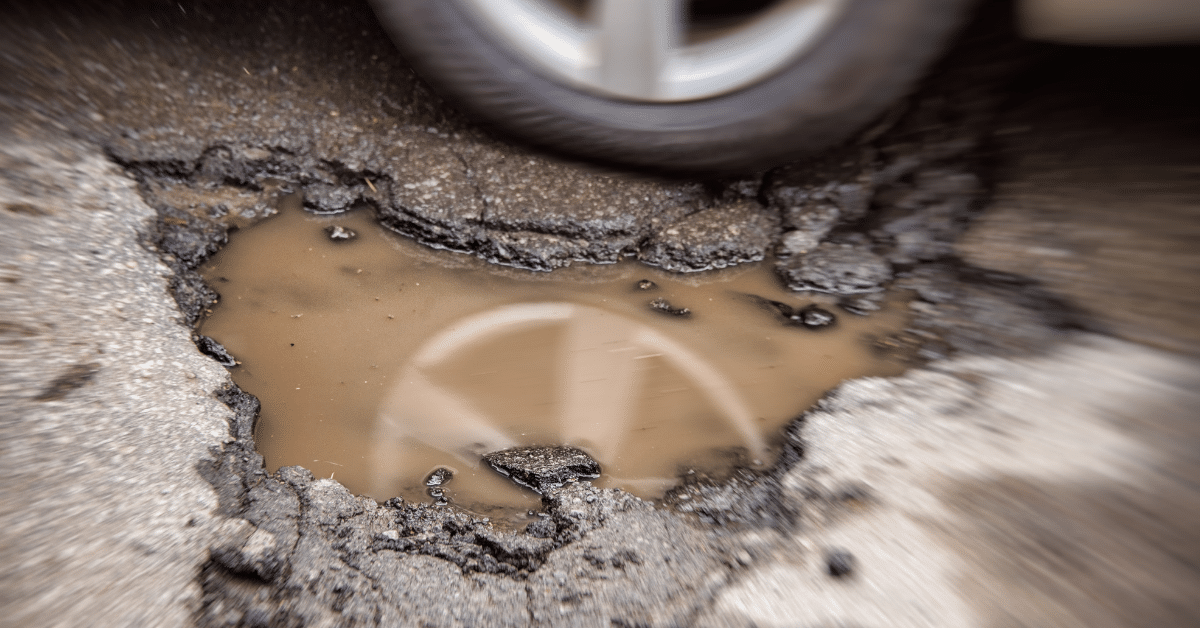As one of Perth’s leading provider of pothole repair services, our team knows a thing or two about potholes. To help you prepare for these nasty little surprises in the road, we’ve put together this handy blog outlining what potholes are, how they are made and how Claremont Asphalt is here to help.
Getting To Know Potholes
Potholes are more than just annoying bumps and dips in the road. These depressions or holes actually pose significant risk to commuters in cars, on bicycles and even walking pedestrians. Potholes on the surface of the road can also cause damage to the passing vehicles or nearby infrastructure.
But how do potholes form?
The Cause of Potholes
Potholes can result from a combination of different factors. However, the main culprit is most commonly water filtration. When water seeps into the small cracks in the surface of the road, such as through the asphalt, it can weaken the underlying layers and inherent structures of the pavement.
Then when the temperature fluctuates, this process is exacerbated and can cause further issues. Commonly, during colder months of the year, the water that has seeped through the cracks freezes and puts more pressure on the surrounding asphalt.
As the temperatures rise and the ice melts back to water, the void, cracks, holes and breakages in the road remain. Over repeated cycles the entire pavement begins to weaken. This is often referred to as the freezing and thawing cycle.
Now combine this with heavy traffic in the form of trucks and buses and the combined, constant pressure can cause further deterioration of the compromised road and create potholes.
Road surfaces that are not sufficiently or properly maintained can deteriorate quicker. The more small cracks and bad drainage is neglected the more water can penetrate and the more likely it is that potholes will form.
The Stages of Pothole Formation
Potholes do not simply appear out of nowhere. They are generally formed due to the following typical process.
Crack development
Small cracks will begin to appear on the road surface. This is not concerning in and of itself and is simply a result of normal wear and tear. Extreme weather conditions or substandard asphalt and other road materials can make the crack development worse.
Water infiltrates
The second stage of pothole development is the infiltration of water into the cracks. The freeze-thaw cycle outlined above then accelerates the process of crack development weakens the pavement.
Collapse
Lastly, the passing of heavy traffic overhead puts even more pressure on to the weakened pavement and eventually causes the surface to collapse thus forming a pothole. The more the pothole is left unrepaired, the worse (i.e., bigger and deeper) it can get.
Why Are Potholes a Problem?
Potholes can create numerous challenges for road users and authorities.
Potholes Pose Safety Risks
Potholes are a significant safety hazard. They can cause drivers to swerve suddenly, or lose control by the sudden bump, and potentially lead to crashes.
For cyclists and motorcyclists, hitting a pothole can result in serious accidents in and of itself.
Vehicle Damage
Potholes can cause substantial and costly damage to vehicles, The edges of the potholes can puncture tires, bend wheel rims, or cause problems with suspension and alignment. Even shallow potholes can cause scratches at the very least.
Economic Impact
Local authorities who are responsible for road maintenance can face significant expenses in road maintenance and repair if potholes are not prevented or treated quickly.
For private businesses as well, particularly those in logistics and delivery, potholes can mean delays, vehicular damage, and increased operational costs.
Can Potholes Be Prevented?
Yes, they can. And yes, they should.
Preventing potholes is more cost-effective than repairing them and it avoids the risks and damage outlined above.
At Claremont Asphalt, our team is not just made up of experts in preventing potholes from forming by ensuring high quality asphalt and installation, we are also the best port of call for all things pothole repair.
Nevertheless, here are some strategies for pothole prevention:
- Be proactive with your maintenance: Regular road inspections and prompt sealing of any small cracks you may notice can prevent water from seeping into the road surface.
- Invest in improved drainage: Seeing as water is the biggest culprit of pothole formation, ensuring your roads have the proper drainage systems in place will prevent water accumulation on road surfaces and thus further damage.
- Only use quality materials: Use high-quality, durable materials in road construction to increase the lifespan of the road surfaces in question and improve resistance to pothole formation and wear/tear.
- Always repair cracks: Sometimes, the cracks cannot be prevented through maintenance, that is why addressing small issues quickly is important as failing to do so will see the damage escalating into larger and more costly problems.
Claremont Asphalt – the one call you need to make for pothole repairs
When it comes to pothole prevention and repair in Perth, Claremont Asphalt is the one call you need to make.
Our contractors are experts in both identifying potential potholes and repairing existing problems. We use the highest quality of asphalt materials and advanced repair techniques to offer affordable solutions that work, last and look great.
Plus, our customer service is second to none, so we ensure all of our customers enjoy peace of mind whenever a piece is missing from their road!
Need a pothole repaired promptly? Want to know how to maintain your road surfaces to reduce further risk of damage? Make sure to contact the Claremont Asphalt team today for a free quote!

